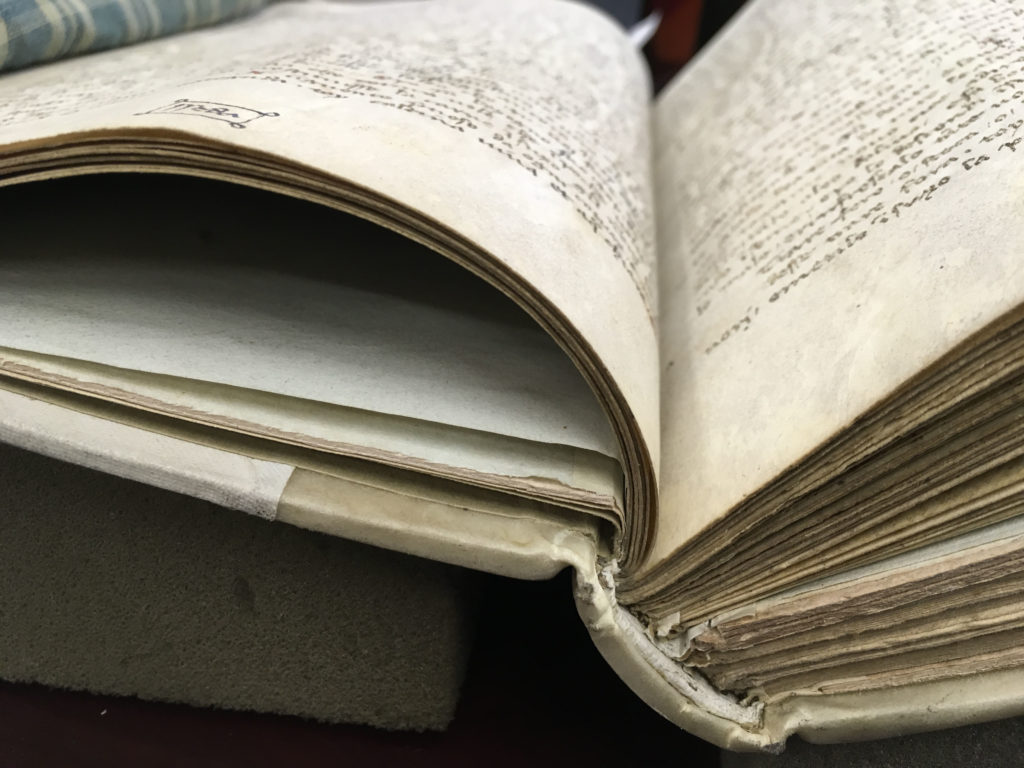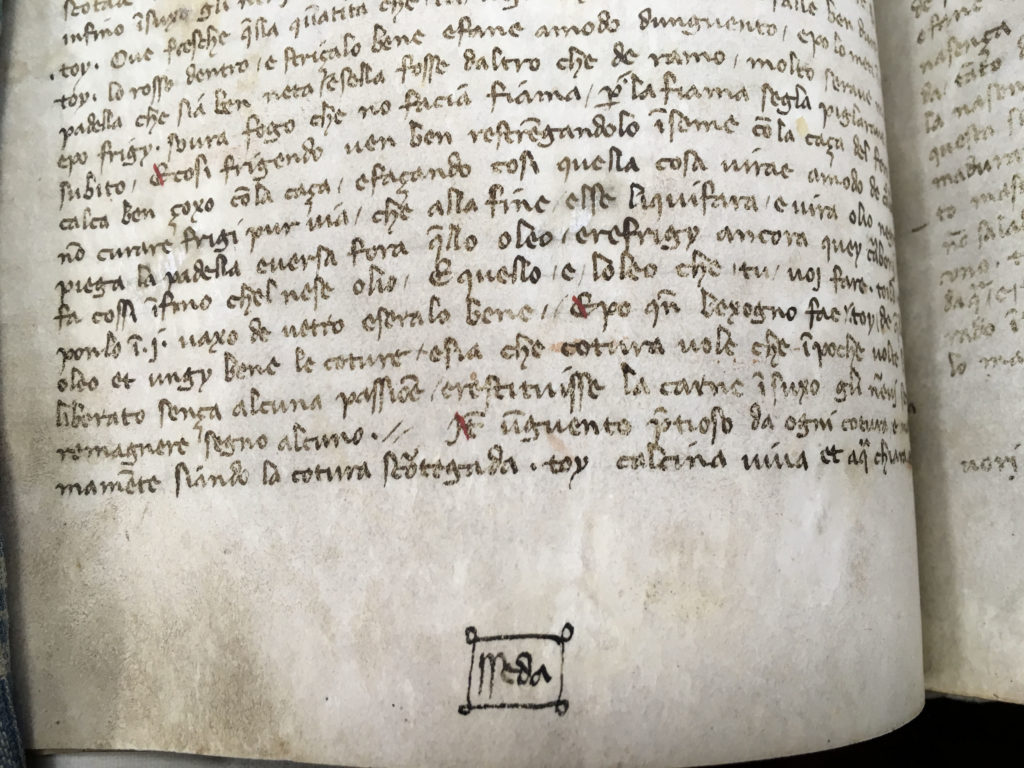What are quires and catchwords, and why are they important?
History of the book
Tracing 10a 159 through time*
We know, thanks to our scribe Christoforus B., that 10a 159 was completed in July 1493. But where did go from there? We don’t know who the first owners may have been, but book stamps, inscriptions, and sale catalogues can tell us about later owners.

A medieval ‘table of contents’
The idea of a table of contents or index is not a new one; in fact, even early Greek papyri contained sections and often lists of items. In 10a 159, a 15th century Italian manuscript which includes Macer Floridus’ De virtutibus herbarum, the section headings are listed in the back of the volume.

Making the Medieval Digital
“If [medieval] culture is regarded as a response to the environment then the elements in that environment to which it responded most vigorously were manuscripts.”
– C. S. Lewis, The Discarded Image: An Introduction to Medieval and Renaissance Literature

The Historical Medical Library, as part of the Philadelphia Area Consortium of Special Collections Libraries (PACSCL), is participating in a CLIR grant to digitize Western medieval and early modern manuscripts held by libraries in the greater Philadelphia area. The Library is lending thirteen medical manuscripts dating from c. 1220 to 1600 to this project, called Bibliotheca Philadelphiensis (BiblioPhilly). Our manuscripts will be digitized at the University of Pennsylvania’s Schoenberg Center for Electronic Text and Images (SCETI) and the digital images hosted through the University of Pennyslvania’s OPenn manuscript portal and dark-archived at Lehigh University.
The Vocabulary of the Book: Adventures at Rare Book School
This past June, I experienced what many rare book librarians only dream of – I was accepted at Rare Book School, also know as Summer Camp for Book Nerds. Rare Book School (RBS) was founded in 1983 by Terry Belanger to enhance the study of books across multiple disciplines and fields. Today, RBS offers over 60 courses at multiple locations, with the main hub being at The University of Virginia.
I was accepted into the most competitive class at RBS: The History of the Book, 200-2000 taught by John Buchtel, Head of Special Collections at Georgetown University, and Mark Dimunation, Chief of the Rare Books and Special Collections Division at the Library of Congress. The course promised a survey of printing methods and the evolution of the book, and the cultural impact of both. The course also provided a strong list of vocabulary words and phrases that all students who wish to stay in the field should know. I received my master’s degree a little more than a year before attending RBS, and in my current position as Reference Librarian, I find myself working with scholars from all over the world, all of whom have multiple perspectives on books. This course seemed promising.
The Skin She Lived In: Anthropodermic Books in the Historical Medical Library
-by Beth Lander
On Wednesday, July 15, 1868, a 28 year old woman named Mary Lynch was admitted to Old Blockley, Philadelphia’s almshouse, officially known as Philadelphia General Hospital (PGH). Old Blockley was located at what is now the intersection of 34th Street and Civic Center Boulevard, on the southeast corner of the University of Pennsylvania. Blockley was where you went when you could not afford care in a private hospital.
The Women’s Receiving Register from PGH lists a small amount of information for each patient: name, birthplace (a country, if other than the United States. Mary was born in Ireland.), age, temperate or intemperate habits (Were you a drunk, or not?), date of admission, ward, color and diagnosis.
Mary suffered from phthitis, an archaic term for tuberculosis of the lungs. She was listed as being of temperate habits.



